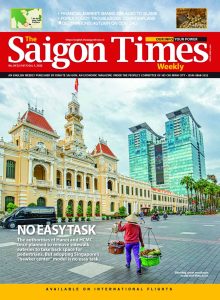The Ministry of Science and Technology will officially lift regulations on the localization ratio in the automobile sector and the levels at which imported vehicle components are knocked down beginning October 1. However, local automakers are concerned that the sudden change may cause more harm than good, given that the looming legal void left by the repeal of previous policies could put them on tenterhooks.
Burdens recede, but challenges continue
In mid-August, the Ministry of Science and Technology issued Circular No. 11, eliminating regulations on the localization ratio in vehicle production. The circular will come into effect on October 1, nullifying Decision No. 28/2004, Decision No. 05/2005 and Circular No. 05/2012, among other relevant requirements.
For many years, the Ministry of Finance has used the localization ratio requirements of the Ministry of Science and Technology as the legal foundation for evaluating import taxes on parts imported for local assembly.
Still, in the eyes of businesses, eliminating these regulations is essential to keep up with local and global auto industry development trends. More importantly, the initiative will enhance the efficiency of the State administration, the consistency of the legal system and the enforcement of treaties and free trade agreements inked between Vietnam and other nations.
Vietnam still evaluates the ratio of local content based on clusters of locally made components, which appears to be out of step with the auto industry development. Other ASEAN member states, on the other hand, focus on the total value of each item combined to benefit from tax breaks under the ASEAN Trade in Goods Agreement (ATIGA).
Given the issues that have arisen, the approach is being phased out as it has done little to spur growth in the automobile industry. Rather, automobile makers have long supported basing the localization ratio calculation on the cost of parts produced by domestic companies, which is believed to encourage the expansion of the auto parts manufacturing industry more effectively.
However, concerns remain given that there has been no new regulation to fill the void caused by the removal of current localization ratio guidelines. Thus, the move might potentially backfire as it could leave automakers in a state of uncertainty and confusion without a clear path to run their business.
A voice from the Ministry of Finance
On September 12, the Ministry of Finance wrote to the Ministry of Science and Technology to forgo implementing Circular No. 11 though it is due to take effect in less than a month.
Rather, the Ministry of Finance requested that the circular’s implementation date be delayed until a new decree on export tax and preferential import tariff, which is made available in October 2022, is implemented. Put differently, the Ministry of Science and Technology was asked to put on hold the circular until the Government issues the new decree.
The Ministry of Finance said that lifting the given regulations would make local vehicle manufacturing more challenging, at least initially, as it might result in legal issues that conflict with existing regulatory frameworks. The level of the complete knocked-down (CKD) units in domestic auto manufacturing remains an important indicator in a wide range of relevant Government regulations, including export tariffs and preferential import tariffs used to calculate taxes.

Currently, domestic enterprises importing vehicle parts are eligible for a preferential tax rate applied to each auto component if they meet the relevant conditions, which are either the minimum CKD requirement or the total value of imported components that does not exceed 10% of the total value. Otherwise, firms may be subject to a higher tax rate imposed on completely built-up (CBU) autos.
Regulations on CKD component imports have laid the groundwork for implementing tax incentive legislation for local automotive production and assembly since 2018.
To fuel the expansion of the domestic market, the Government issued Decree No. 125/2017, which included a five-year incentive tax on imported vehicle components used for domestic assembly and manufacture beginning in 2018. As a result, businesses participating in the production and assembly of vehicles are entitled to the most favorable import tax rate of 0% on components that cannot be produced domestically.
Additionally, tax breaks are also available for each categorized part, with an average rate on imported components ranging from 12% to 14% of the total, assuming all conditions, including the CKD threshold, are met. Otherwise, automakers will face heavy taxation as CBU imports.
Consequently, domestic businesses have made significant expenditures on assembly lines and vehicle production to be eligible for such preferential regulations. By enacting Decree No. 10/2021, which updated Decrees No. 57/2020 and No. 122/2016, the Government continued to support local automakers and extended the date of applying tax incentives for domestic automobile firms until the end of 2027.











